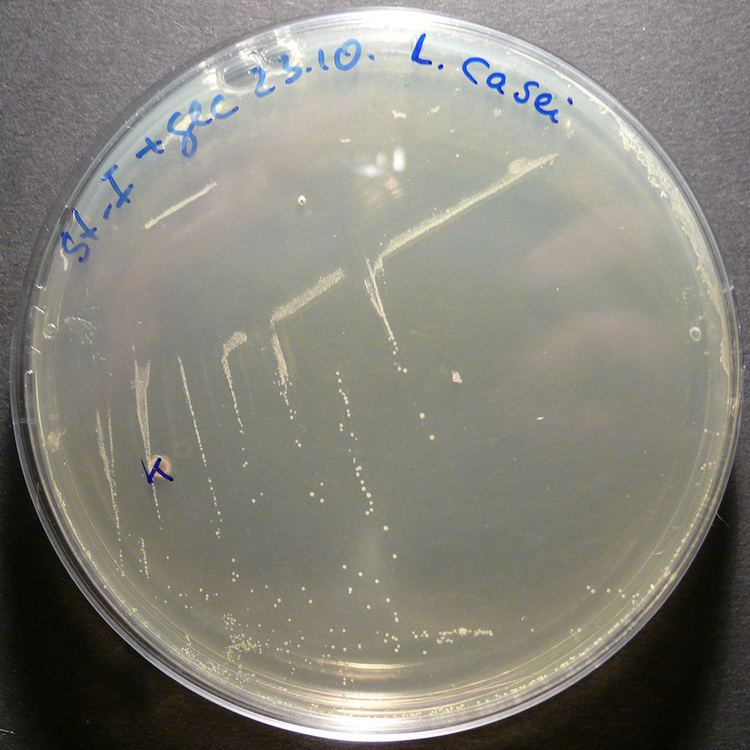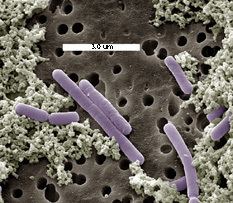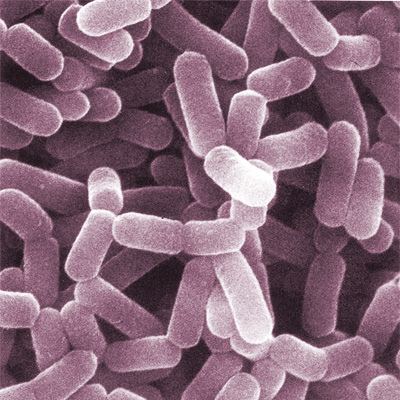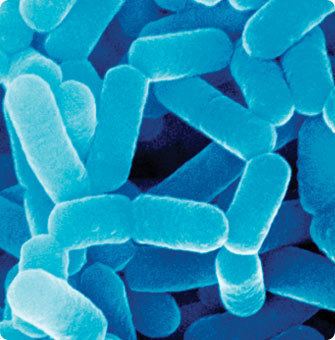Domain Bacteria Order Lactobacillales Genus Lactobacillus Rank Species | Phylum Firmicutes Family Lactobacillaceae Scientific name Lactobacillus casei Higher classification Lactobacillus | |
Similar Lactobacillus, Lactobacillus rhamnosus, Bacteria, Lactobacillus plantarum, Bifidobacterium | ||
Bacteria lactobacillus casei
Lactobacillus casei is a species of genus Lactobacillus found in the human intestine and mouth. This particular species of Lactobacillus is documented to have a wide pH and temperature range, and complements the growth of L. acidophilus, a producer of the enzyme amylase (a carbohydrate-digesting enzyme).
Contents
- Bacteria lactobacillus casei
- Live lactobacilli casei experiment
- Dairy
- Medical
- Commercial probiotic
- Other
- References

Live lactobacilli casei experiment
Dairy
The most common application of L. casei is industrial, specifically for dairy production.
Lactobacillus casei is typically the dominant species of nonstarter lactic acid bacteria (i.e. contaminant bacteria) present in ripening cheddar cheese, and, recently, the complete genome sequence of L. casei ATCC 334 has become available. L. casei is also the dominant species in naturally fermented Sicilian green olives.
Medical

A commercial beverage containing L. casei strain Shirota has been shown to inhibit the in vivo growth of Helicobacter pylori, but when the same beverage was consumed by humans in a small trial, H. pylori colonization decreased only slightly, and the trend was not statistically significant. Some L. casei strains are considered to be probiotic, and may be effective in alleviation of gastrointestinal pathogenic bacterial diseases. According to World Health Organization, those properties have to be demonstrated on each specific strain—including human clinical studies—to be valid. L. casei has been combined with other probiotic strains of bacteria in randomized trials studying its effects in preventing antibiotic-associated diarrhea (AAD) and Clostridium difficile infections (CDI), and patients in the trials who were not given the placebo had significantly lower rates of AAD or CDI (depending on the trial) with no adverse effects reported. Additionally, trials have shown significantly shorter recovery times in children suffering from acute diarrhea (primarily caused by rotavirus) when given different L. casei treatments when compared to placebo. Studies suggest that Lactobacillus is a safe and effective treatment for acute and infectious diarrhea. In the preparation of food, L. casei bacteria can be used in the natural fermentation of beans to lower levels of the compounds causing flatulence upon digestion. Pancreatic necrosis if left untreated has an almost 100% fatality rate due to bacterial translocation. L. casei has been found to have a wide spectrum of coverage against pathogenic organisms that translocate from the gastrointestinal tract, thereby demonstrating therapeutic benefit in pancreatic necrosis. The addition of other probiotic strains reduces pro-inflammatory cytokines and further suppresses bacterial overgrowth in the small intestine leading to a reduction in bacterial translocation. Administration of L. casei prior to an inflammatory insult to the bowel prevents the development of increased intestinal permeability.
Commercial probiotic

Among the best-documented, probiotic L.casei, L. casei DN-114001, and L. casei Shirota have been extensively studied and are widely available as BIO-K Plus functional foods (see Actimel, Yakult).

Another commercially available form of L. casei can be found in Danactive made by Dannon. They registered trademarked L. casei as L. casei Immunita .
Other

In the past few years, many studies have been conducted in the decolorization of azo dyes by lactic acid bacteria such as L. casei TISTR 1500, L. paracasei, Oenococcus oeni, etc. With the azoreductase activity, mono- and diazo bonds are degraded completely, and generate other aromatic compounds as intermediates.
